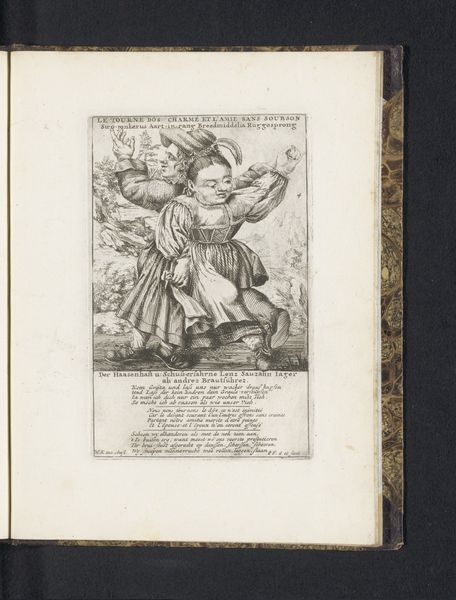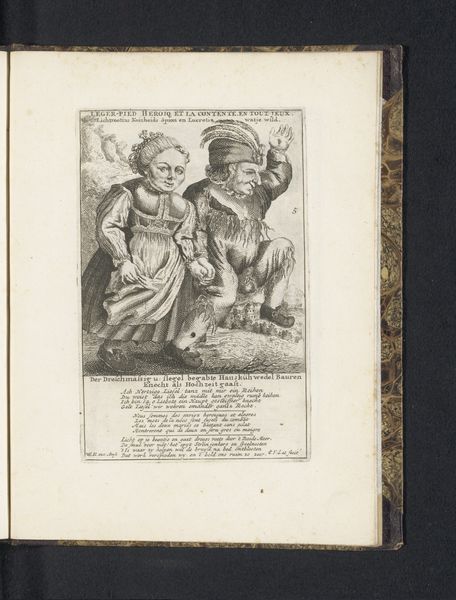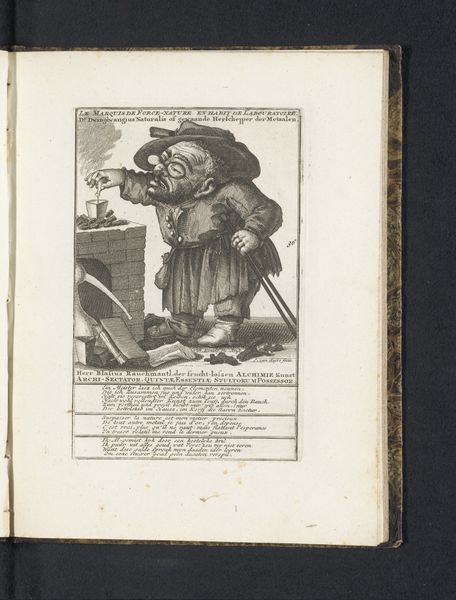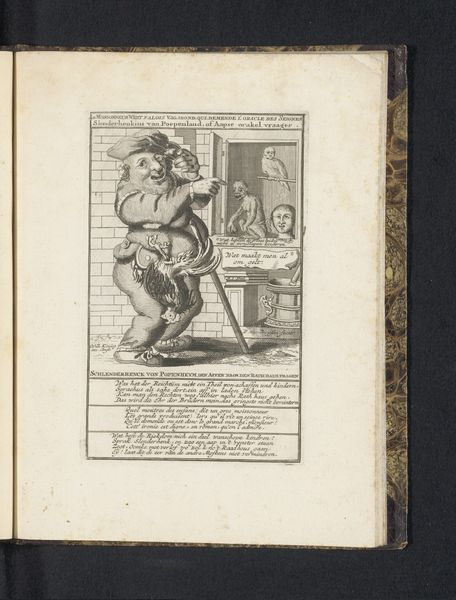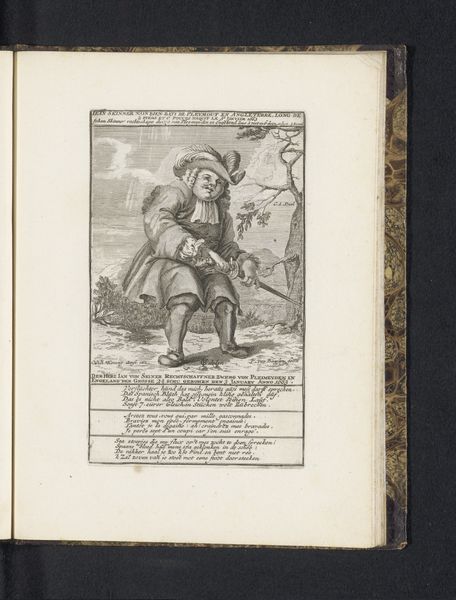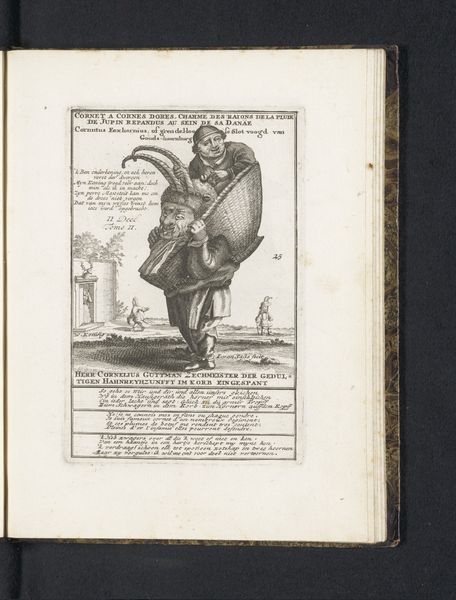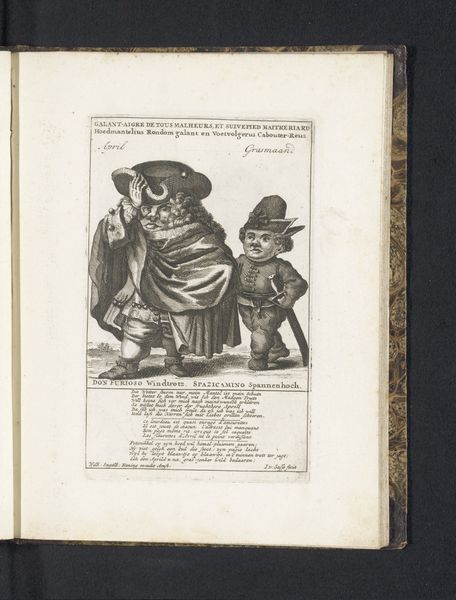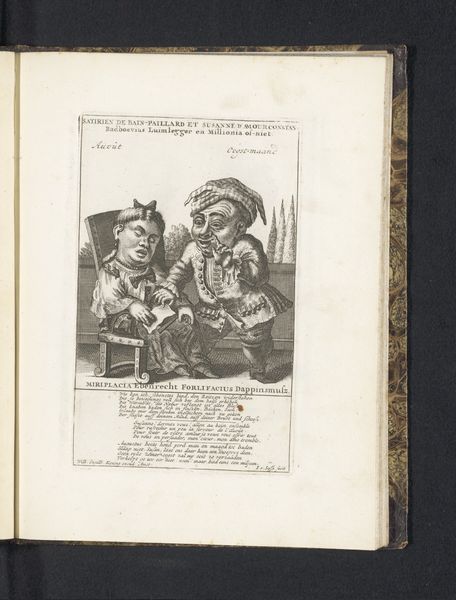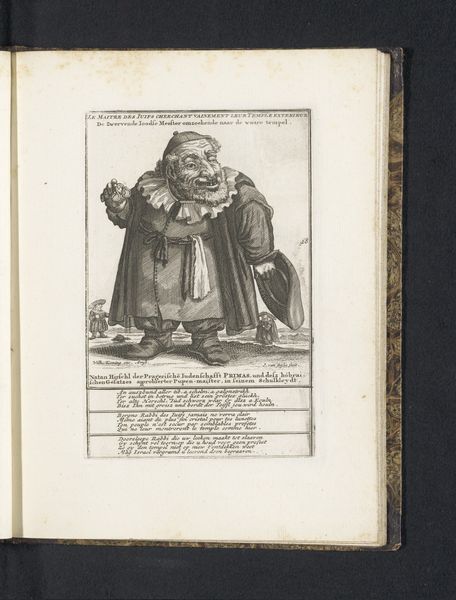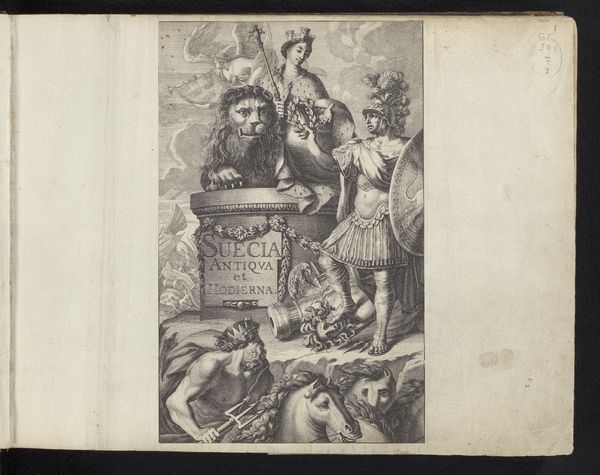
print, engraving
#
portrait
#
baroque
# print
#
genre-painting
#
northern-renaissance
#
engraving
Dimensions: height 165 mm, width 101 mm, height 227 mm, width 170 mm
Copyright: Rijks Museum: Open Domain
Curator: This engraving, dating back to the early 1720s, presents "The Newly Wedded Dwarf Couple," a work attributed to Jacob Folkema currently residing here at the Rijksmuseum. It’s quite a striking image. Editor: Yes, immediately, there's a sense of...unsettled celebration. The couple, though adorned in finery, seems burdened by something—almost a forced gaiety. Is it simply the style of the era, or something deeper? Curator: I think it's important to recognize the period, the baroque, the hints of northern Renaissance, but consider too, the broader societal perspective. Images such as this perpetuate othering narratives. Consider how their stature and dress mark them as "different" from societal norms, reinforcing existing power structures and social marginalization through art. Editor: That’s certainly a compelling and unsettling consideration. What also captures my attention is the odd dynamic between them. He, animated and gesturing wildly, seemingly toward an imagined crowd or celebration; while she, holding his hand rather passively, appears thoughtful—reserved even. Curator: Their differing expressions definitely provoke intrigue, and if you look closely, there's text beneath the image. It looks to be some kind of allegorical poem written in period-specific German, referencing Dorf Schultheis. Editor: A local magistrate or headman, I assume? Does that add more satirical context to the overall feel? Are we, as viewers, invited to look down on them and their imagined roles in a miniature community? Curator: Precisely. It questions whose story is privileged and the effect such depictions may have had on individuals of restricted growth, who are at risk of ridicule and objectification even today. The print serves as a poignant commentary on society's construction of the “other,” its role in oppression. Editor: You’re right; there's a complex dialogue happening—a reminder of how art can simultaneously reflect and reinforce cultural attitudes. It is an echo, too, through centuries, inviting us to confront and maybe change. Curator: Ultimately, reflecting on such an image reminds us that our interpretations evolve alongside our values. Perhaps its function, now, is less a matter of amusement but a somber and poignant lesson.
Comments
No comments
Be the first to comment and join the conversation on the ultimate creative platform.
